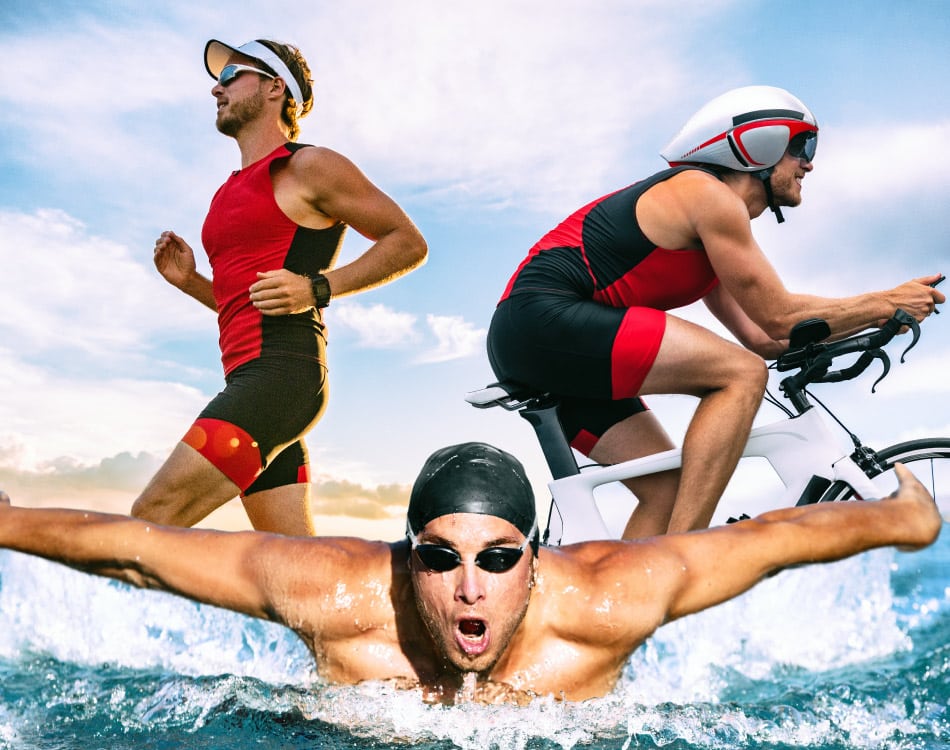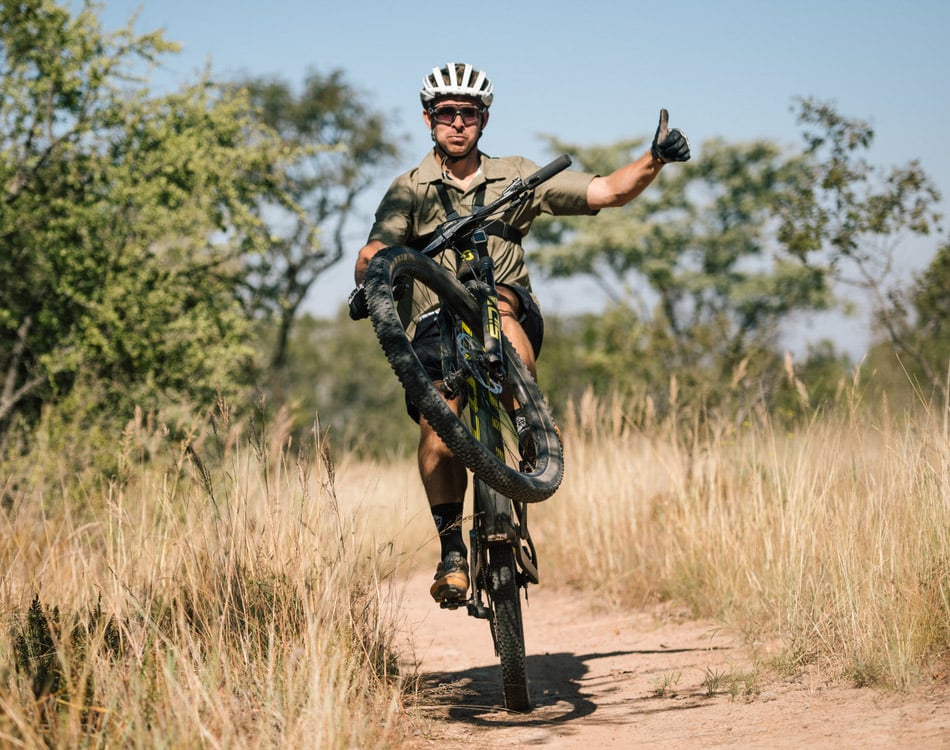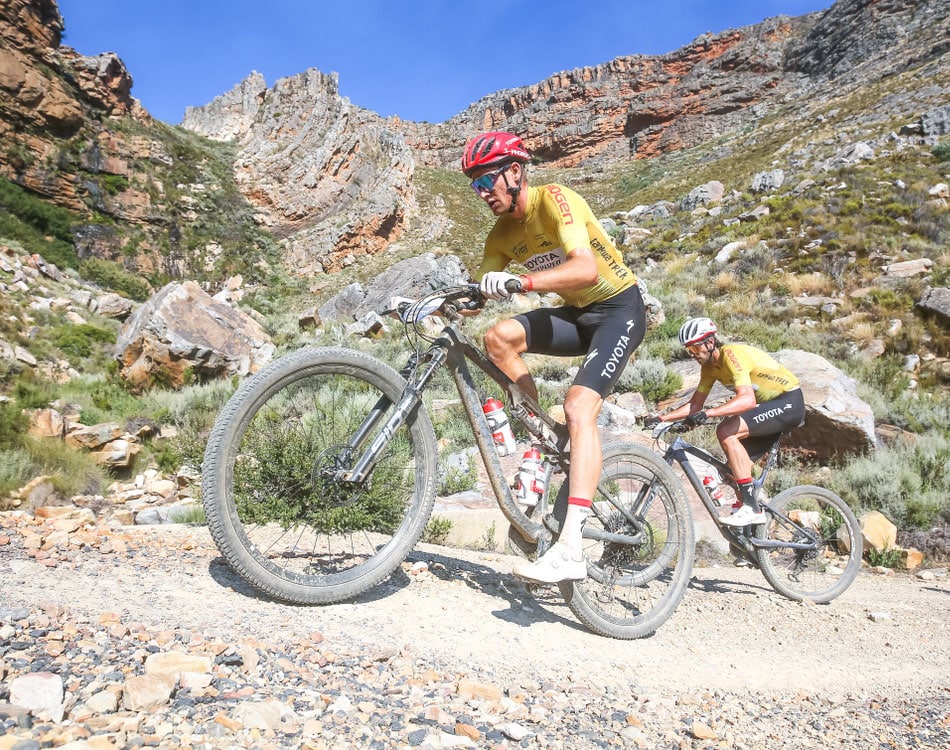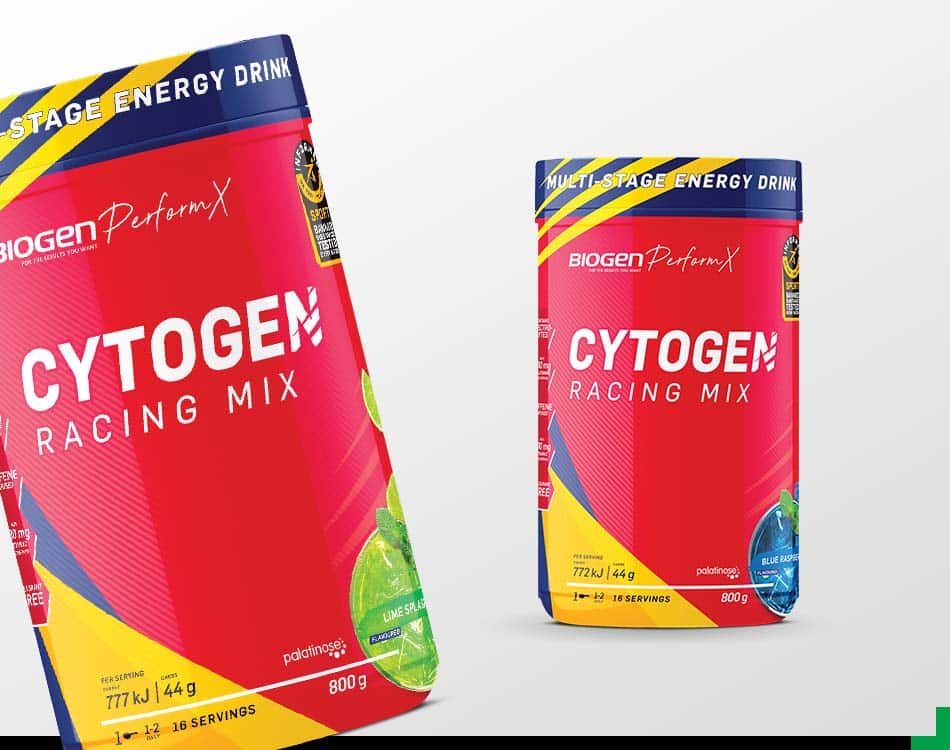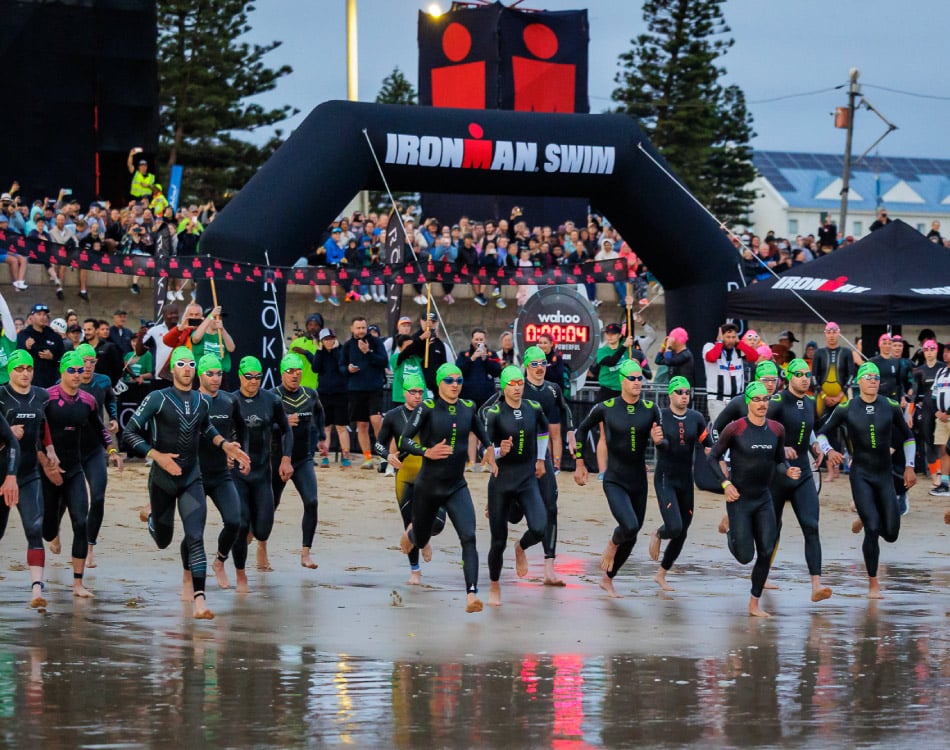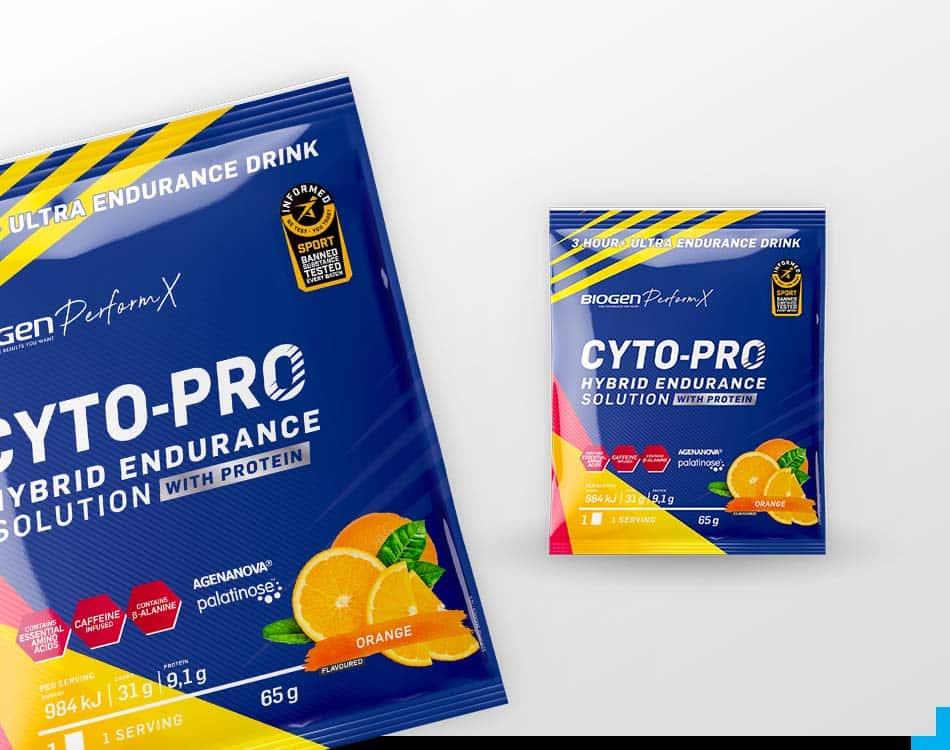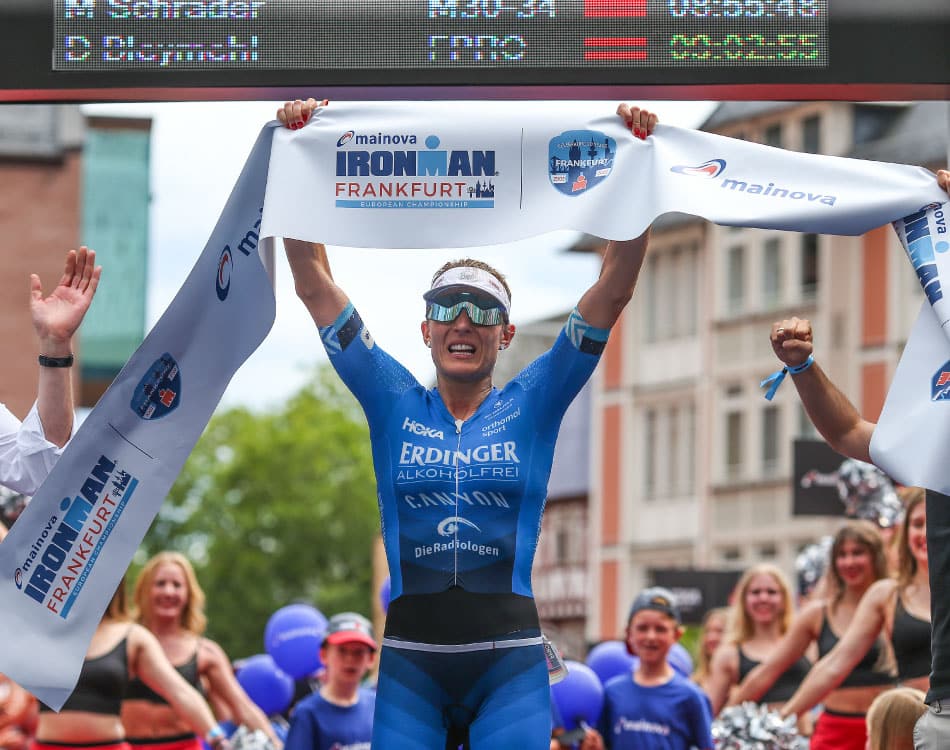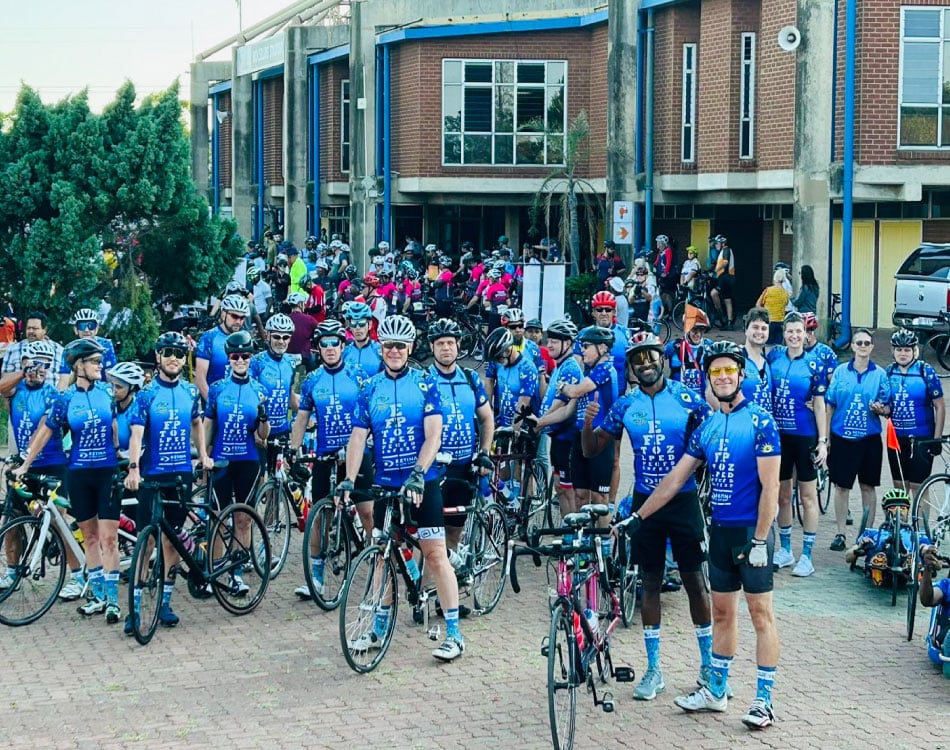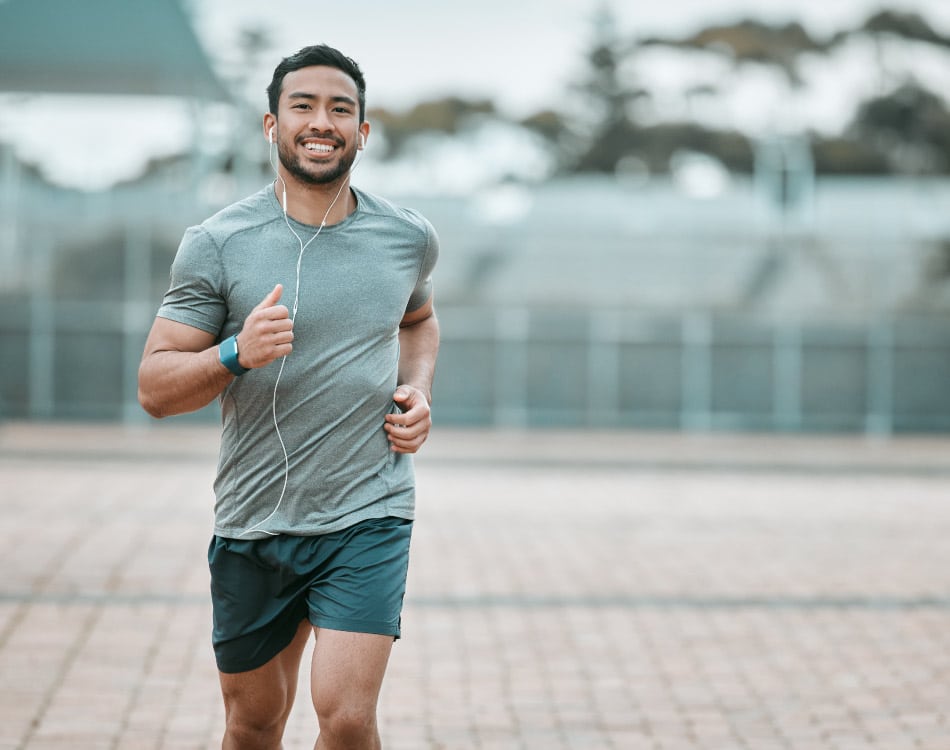Triathlon is a demanding sport as athletes train and compete across three different disciplines – swim, bike and run.
But any seasoned athlete or coach will tell you that there are actually five core disciplines that every triathlete should master to achieve their best race-day performance – the fourth is rest and recovery, and optimal nutrition is the fifth.
READ MORE | Unbreakable: The Indomitable Spirit Of Ironman Alwyn Uys
The nutrition factor
Nutrition is a pivotal component in a triathlete’s race-day success, especially for longer duration events like the 70.3 and full Ironman events.
When racing for four hours and beyond, the wrong fuelling strategy or a poorly executed plan can have serious consequences in the latter stages of the event.
The three main components of every comprehensive nutrition plan should cover:
- Sufficient energy to sustain your effort from a combination of solid, gel and liquid foodstuffs and supplements.
- Finding the right timing and amount of solid, gel and liquid fuel to reduce the risk of gastrointestinal issues.
- Optimal hydration to prevent severe dehydration while avoiding over-hydration (hyponatremia).
READ MORE | Finish Your First Ironman: A Guide For Novices
Meeting your energy requirements
For longer duration events, triathletes should aim to ingest 60-90 g of carbohydrates per hour1, which is roughly 240-360 calories.
A meta-analysis2 published in the journal Nutrients, which reviewed current evidence concerning macronutrient intakes, hydration requirements, and supplement use in endurance sports, confirmed that athletes who race for 2.5 hours or more will benefit from carbohydrates “intakes of 60–70 g/h, and up to 90 g/h if tolerable”.
This energy can come from multiple sources based on individualised factors such as preference, tolerability and differences in energy metabolism.
During ultra-endurance events, a combination of solid and liquid energy sources is the ideal approach to meet your energy requires. This can include whole foods that are well tolerated and various supplements for convenience and a more precise macronutrient and calorie intake.
With regard to supplements, the general consensus among the endurance community is that a predominantly liquid-based fuelling strategy is best, augmented with gels and bars in a mixed approach, depending on the type of event, its duration, and your individual response.
#1. Fuel your swim
The nature of the swim means it is impractical to carry fuel with you in any form or to consume it without losing momentum in the water. A sensible approach is to consume a gel, energy drink or easily digestible food source shortly before the race starts to provide a source of circulating glucose in the bloodstream, which can help to spare glycogen stores.
#2. Load up on the bike
Athletes should aim to leverage the low-impact nature of cycling and the additional storage space on the bike to up their calorie intake and get extra fuel on board, without compromising their performance or gastrointestinal comfort. The second half of the bike leg is an important period to front-load calories and boost glycogen stores ahead of the run.
#3. Run smart
As fatigue sets in after the ride and blood starts to pool in the legs on the run, the heart will work harder to pump blood to the digestive system. It can, therefore, be difficult to digest solid foodstuffs during the run. Carb sources in the form of gels and liquids are generally the most convenient and efficient at this stage of the race.
#4. Use the transition
While it is important to not lose time in the transition zone, the short break as you change gear between disciplines is an ideal time to get down some form of energy. A bar, chews or a gel offer quick and convenient ways to top up energy stores before the next discipline as you can chew while you change.
While out on the bike and run, drip feeding according to a schedule is the generally recommended approach as it helps to keep energy levels stable and can support better absorption at a time when digestive function is compromised.
Clock feeding also ensures that athletes eat and drink early and often, which is advantageous in ultra-endurance events as athletes provide their bodies with what it needs at the right times to perform at its best.
Avoiding tummy troubles
Consuming small amounts more frequently at set intervals also lowers the risk of gastrointestinal distress, especially as athletes are more likely to experience digestive issues during ultra-endurance events.
Many athletes experience gastrointestinal distress during ultra-endurance races primarily due to reduced digestive function as the body diverts blood flow from the digestive system to working muscles.
Additionally, the jarring and repetitive nature of running or cycling can disrupt the normal rhythmic contractions of the intestines, resulting in slower transit time and potential bowel disturbances.
Furthermore, the nutritional choices athletes make during ultra-endurance races can contribute to gastrointestinal distress. Consuming high-carbohydrate foods or drinks, particularly in excessive amounts or when dehydration sets in, may overwhelm the digestive system and lead to issues such as bloating, cramping, and diarrhoea.
In this regard, athletes need to test and get accustomed to their fuelling plan before race day. Triathletes should use their preferred foods and supplements regularly during training blocks to test palatability and tolerance.
A drip feeding approach and taking smaller sips more often may help to prevent bloating and the uncomfortable sloshing feeling in the gut that often occurs later in a race.
Avoiding foodstuffs and supplements that require more mechanical digestion later in the race, especially on the run, can also reduce your risk of tummy trouble. Use more easily digestible sources like gels and energy drinks during the latter stages of the race to compensate for the blood pooling effect in the legs.
At higher effort levels, which typically set in at the end of the race, breathing also becomes laboured. In these instances, athletes may want to consider liquid-only feeds during the latter stages of the run because chewing and swallowing can prove difficult.
However, when consuming more liquid-based calories, it is important to balance intakes with electrolyte drinks aimed at maintaining hydration levels to avoid over-drinking and potential issues such as bloating and jostling in the digestive system and the risk of over-hydration.
Maintain optimal fluid balance
It is important that athletes find the optimal balance with regard to their fluid intake to avoid dehydration while not drinking so much that it compromises their comfort and performance.
Previous guidelines around optimal hydration for athletes recommend staying ahead of thirst by drinking 3 litres of water a day and an extra 500ml for every 20 minutes of strenuous exercise, as many believed that dehydration was the main cause of decreased performance, particularly during endurance events.
However, if you do the math that’s 1.5 litres of fluid every hour during exercise. Over an Ironman-distance triathlon, athletes who follow these guidelines could consume 8-12 litres during an event.
While drinking this volume of fluid may seem logical as a strategy to stave off the performance-sapping effects of dehydration, more contemporary research3 reveals is that that mild dehydration, which equates to a 2-6% decrease in body weight, does not impair exercise performance in the heat.
This dated approach can also lead to a more serious condition known as exercise-associated hyponatremia, which is a serious condition where serum sodium concentrations drop to critically low levels due to a shift in water balance.
Research findings4 on hyponatremia recommend that athletes drink to thirst to avoid excessive dehydration.
Alternating carbohydrate-based drinks for energy with electrolyte-infused drinks can support optimal hydration during longer events and may offer additional benefits as some evidence5 suggests that cramp suffers can find some degree of relief from ingesting electrolytes.
Electrolytes are minerals – the major ones include sodium, chloride, magnesium, calcium, and potassium – that control fluid balance, among other functions.
Maintaining the appropriate levels of these electrolytes in our bodies will ensure that we absorb fluid during prolonged exercise, whereas an imbalance could lead to poor absorption that results in dehydration, bloating, and a waterlogged gut.
References:
- Andrew Getzin, Cynthia Milner, Marie Harkins. Fueling the Triathlete: Evidence-Based Practical Advice for Athletes of All Levels. July 2017. Current Sports Medicine Reports 16(4):240-246. DOI:10.1249/JSR.0000000000000386.
- Kenneth Vitale, Andrew Getzin. Nutrition and Supplement Update for the Endurance Athlete: Review and Recommendations. Nutrients. 2019 Jun; 11(6): 1289. Published online 2019 Jun 7. doi: 10.3390/nu11061289.
- Bradley A Wall, Greig Watson, et al. Current hydration guidelines are erroneous: dehydration does not impair exercise performance in the heat. Br J Sports Med. 2015 Aug;49(16):1077-83. doi: 10.1136/bjsports-2013-092417. Epub 2013 Sep 20.
- Diego López de Lara, Jorge Gabriel Ruiz-Sánchez, et al. Exercise-Induced Hyponatremia: An Assessment of the International Hydration Recommendations Followed During the Gran Trail De Peñalara and Vitoria-Gasteiz Ironman Competitions. Front Nutr. 2021; 8: 781229. Published online 2022 Feb 21. doi: 10.3389/fnut.2021.781229.
- Wing Yin Lau, Haruyasu Kato, Kazunori Nosaka. Effect of oral rehydration solution versus spring water intake during exercise in the heat on muscle cramp susceptibility of young men. Journal of the International Society of Sports Nutrition, 2021; 18 (1) DOI: 10.1186/s12970-021-00414-8

